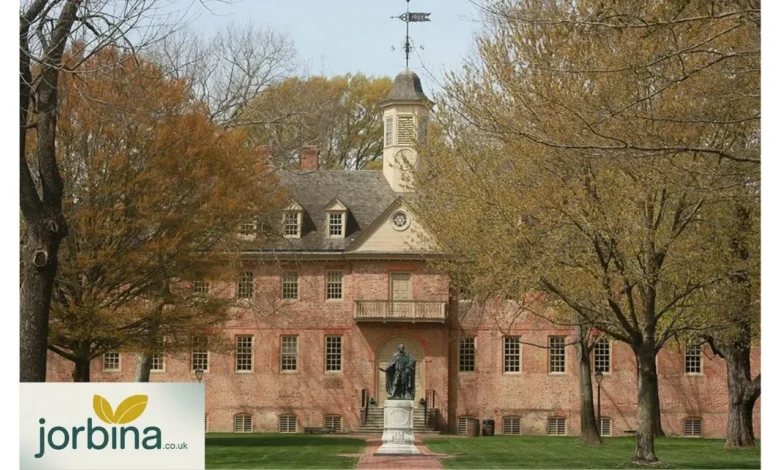Exploring Christopher Wren Yard: A Walk Through History

Have you ever happened upon a location that seems to subtly recite historical tales? One of London’s uncommon corners is Christopher Wren Yard. Although it may appear to be a typical courtyard at first, a closer examination reveals layers of artistry, architecture, and history that represent the life of one of Britain’s most renowned architects. So who was Christopher Wren, and why, hundreds of years later, does his art still inspire people? Let’s examine it more closely.
The Origins of Christopher Wren Yard
In the center of London’s historic district is Christopher Wren Yard. When you walk through the Yard, you see more than just benches and cobblestones; there are buildings and other structures all around that were created by Christopher Wren. The small but significant area gives guests a sense of Wren’s skill at fusing beauty and utility. Every element, from the symmetry of the facades to the window placement, demonstrates artistry and consideration.
Who Was Sir Christopher Wren?
Christopher Wren was born in 1632 in East Knoyle, a village in Wiltshire. Even as a child, he had a sharp mind and curiosity that stretched across both science and art. He attended Oxford University, where he distinguished himself in mathematics, astronomy, and physics. This strong academic foundation would later influence his architectural innovations. Though Wren started as a scientist and professor, architecture became his true calling, shaping London in ways that are still visible today.
What Is Sir Christopher Wren Famous For?
The rebirth of London following the Great Fire of 1666 is closely associated with Wren’s name. When given the task of redesigning the city, he approached it with incredible inventiveness. St Paul’s Cathedral, a masterpiece that defines the London skyline, is his most well-known accomplishment. In addition, Wren created the designs for numerous churches, public structures, and private properties. His work stands out for its unique blend of elegance, structural inventiveness, and timeless appeal. He was constructing for the future rather than just his own time.
Structures Designed by Christopher Wren
Reflections of Wren’s design principles can be seen at Christopher Wren Yard. His attention to space, light, and proportion is evident even in smaller structures. Wren’s architecture frequently struck a balance between inventive methods and classical influences, creating structures that were both aesthetically pleasing and useful. You can see how the design of the Yard promotes interaction and movement while providing peaceful moments. Every area seems to have a purpose, as though Wren himself had designed it so that guests could explore it at their own pace.
Christopher Wren’s Architectural Style
Christopher Wren’s architectural design combined baroque and classical elements. He experimented with light, space, and perspective in addition to using pediments, columns, and domes. The end effect was a sense of grandeur without being overpowering. Nearby buildings around Christopher Wren Yard exhibit delicate proportions and symmetry that allude to his brilliance. Architects who study his work are still guided by these ideas today. The Yard demonstrates how well-considered design can enhance even commonplace areas.
Christopher Wren Artwork
Besides architecture, Wren had a talent for drawing and visual expression. His sketches and plans were often works of art themselves, showing not just technical accuracy but also creative flair. He captured building facades, public spaces, and imaginative designs with skill and vision. In the Yard, imagining his hand sketching plans that eventually came to life helps visitors connect with his creative process. Wren’s artwork reminds us that architecture is both a science and an art.
Christopher Wren Education
Education shaped Wren’s approach to life and work. At Oxford, he immersed himself in mathematics and astronomy while also exploring the arts. This multidisciplinary foundation allowed him to combine logic and creativity. He believed that understanding multiple fields made him a better problem solver and designer. Christopher Wren Yard reflects this philosophy. The space is practical, visually pleasing, and thought out in every detail, demonstrating the connection between knowledge and creation.
Christopher Wren Jr
The Wren family legacy continued through Christopher Wren Jr. While he did not achieve the same fame as his father, he carried on the family’s intellectual pursuits. Wren Jr maintained ties to architecture and scholarship, showing that the family valued both knowledge and creativity. Understanding this adds depth to the story of Christopher Wren, highlighting how his influence extended beyond his personal achievements and into the next generation.
How Did Christopher Wren Die?
Christopher Wren lived a long and remarkable life. He died in 1723 at the age of 90. Christopher Wren died in London and was laid to rest in St Paul’s Cathedral, the building that most clearly represents his genius. His death marked the end of an era, but his influence continues through his buildings, artwork, and writings. Even small spaces like Christopher Wren Yard carry traces of his vision, showing that thoughtful design can endure long after its creator is gone.
Visiting Christopher Wren Yard Today
Christopher Wren Yard is now a living area that combines beauty and peaceful contemplation, in addition to being a historic site. Visitors are welcome to explore, snap pictures, or stop and consider what life might have been like in Wren’s day. The Yard features aspects of Wren’s architecture and design philosophy while providing a tranquil haven from the hustle and bustle of the city. It is a place that stimulates interest and rewards close examination, making history seem approachable and intimate.
Why Christopher Wren’s Work Matters
Christopher Wren’s work is timeless because it merges artistry with practicality. His buildings are elegant but functional, innovative but grounded in tradition. Christopher Wren Yard allows visitors to experience this balance firsthand. You don’t just see architecture; you feel the thought and creativity behind it. Wren’s legacy shows how one person’s vision can transform a city and leave a mark that endures for centuries.
Quick Bio
| Name Origin | Named after Sir Christopher Wren |
| Built | 1980s |
| Location | 115–119 High Street, Croydon, Greater London |
| Purpose | Office and community complex |
| Notable Tenants | London Learning Consortium, Refugee Council |
| Architectural Style | Brick façade, arched walkways, courtyard layout |
| Transport Proximity | Close to East Croydon Station and Tramlink |
FAQs About Christopher Wren
What happened to Christopher Wren?
He devoted his life to science, art, and architecture. After helping rebuild London, he passed away in 1723, leaving behind a remarkable legacy.
What was Sir Christopher Wren famous for?
He is famous for rebuilding many of London’s churches and public buildings after the Great Fire, especially St Paul’s Cathedral.
What is the best-known building designed by Christopher Wren?
St Paul’s Cathedral stands as his most iconic work, recognized worldwide for its design and cultural significance.
Where is Sir Christopher Wren buried?
He is buried in St Paul’s Cathedral, symbolically linking his life and work in one of his greatest achievements.
How is Wren remembered today?
Wren is remembered through his buildings, sketches, and influence on generations of architects. Spaces like Christopher Wren Yard let visitors engage directly with his lasting impact.
Despite its modest size, Christopher Wren Yard has enormous historical and cultural significance. It is the culmination of centuries of human ingenuity, creative thinking, and architectural genius. Each walk through the Yard provides a window into Wren’s thoughts and the city he influenced. Spend some time exploring this amazing space and taking a personal tour of history if you ever find yourself in London.
For more information about visiting Christopher Wren Yard, you can check HSE Edwards – Christopher Wren Yard, 119 High Street, Croydon.



